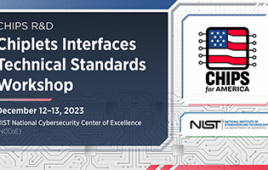A new quantum sensor developed by researchers at the University of Waterloo’s Institute for Quantum Computing (IQC) has proven it can outperform existing technologies and promises significant advancements in long-range 3D imaging and monitoring the success of cancer treatments.
The sensors are the first of their kind and are based on semiconductor nanowires that can detect single particles of light with high timing resolution, speed and efficiency over an unparalleled wavelength range, from ultraviolet to near-infrared.
The technology also has the ability to significantly improve quantum communication and remote sensing capabilities.
“A sensor needs to be very efficient at detecting light. In applications like quantum radar, surveillance, and nighttime operation, very few particles of light return to the device,” said principal investigator Michael Reimer, an IQC faculty member and assistant professor in the Faculty of Engineering’s electrical and computer engineering department. “In these cases, you want to be able to detect every single photon coming in.”
The next generation quantum sensor designed in Reimer’s lab is so fast and efficient that it can absorb and detect a single particle of light, called a photon, and refresh for the next one within nanoseconds. The researchers created an array of tapered nanowires that turn incoming photons into electric current that can be amplified and detected.
Remote sensing, high-speed imaging from space, acquiring long range high resolution 3D images, quantum communication, and singlet oxygen detection for dose monitoring in cancer treatment are all applications that could benefit from the kind of robust single photon detection that this new quantum sensor provides.
The semiconducting nanowire array achieves its high speed, timing resolution and efficiency thanks to the quality of its materials, the number of nanowires, doping profile and the optimization of the nanowire shape and arrangement. The sensor detects a broad spectrum of light with high efficiency and high timing resolution, all while operating at room temperature. Reimer emphasizes that the spectrum absorption can be broadened even further with different materials.
“This device uses Indium Phosphide (InP) nanowires. Changing the material to Indium Gallium Arsenide (InGaAs), for example, can extend the bandwidth even further towards telecommunication wavelengths while maintaining performance,” Reimer said. “It’s state of the art now, with the potential for further enhancements.”
Once the prototype is packaged with the right electronics and portable cooling, the sensor is ready for testing beyond the lab.
“A broad range of industries and research fields will benefit from a quantum sensor with these capabilities,” said Reimer.
In collaboration with researchers at the Eindhoven University of Technology, Tapered InP nanowire arrays for efficient broadband high-speed single photon detection was published in Nature Nanotechnology on March 4. This research was undertaken thanks in part to funding from the Canada First Research Excellence Fund (CFREF).




